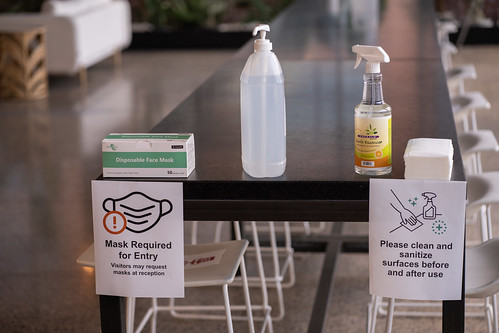Is it COVID, RSV or the flu? What symptoms to look for and how to tell the difference
Covid #Covid

It’s common to get sick during the fall and winter seasons, and now health officials warn of another surge of viruses.
COVID-19 and RSV cases are rising, and with flu season around the corner, there’s more risk of getting sick in the coming months, according to the Centers for Disease Control and Prevention.
“While seasonal influenza (flu) viruses are detected year-round in the United States, flu viruses typically circulate during the fall and winter during what’s known as the flu season, the CDC states. “Since the start of the COVID pandemic, the timing and duration of flu activity has been less predictable.”
Health officials say the COVID-19 burden is lower than at previous points during the pandemic, and most of the U.S. population has some immunity to the virus. However, they still encourage people to vaccinate against all three viral respiratory diseases.
With all three viruses circulating, it may be difficult for some to determine whether their sneeze, cough, or runny nose is a sign of the common cold or one of the three respiratory viruses.
Here are the symptoms to look out for if you’re sick and think you might have COVID, RSV, or the flu:
COVID-19 symptoms
COVID-19 can come with a wide range of symptoms that usually appear 2 to 14 days after exposure. Here are some of the possible signs of the virus:
Flu symptoms
The flu can cause mild to severe illness and potentially lead to death. According to the CDC, symptoms usually appear suddenly for those with the flu. Here are some of the possible signs of the disease:
Fever or feeling chills.
Cough
Sore throat
Runny or stuffy nose
Muscle or body aches
Headaches
Fatigue
RSV symptoms
RSV usually causes mild, cold-like symptoms that typically show up within 4 to 6 days after getting infected. Those symptoms include:
Runny nose
Decrease in appetite
Coughing
Sneezing
Fever
Wheezing
Many people cannot tell the difference between flu and COVID-19 by the symptoms alone because they are so similar, the CDC says.
Here’s what to look out for if you think you may have any of those infections:
Similarities and differences between COVID-19, the flu and RSV
How long are you contagious?
Older children and adults with the flu are usually most contagious during the first 3-4 days of their illness, but some can be contagious for even longer. Those sick with COVID-19 can spread the virus that causes the disease 2-3 days before symptoms appear and can be infectious eight days afterward. Anyone infected with RSV is usually contagious for 3 to 8 days but may be contagious for 1-2 days before symptoms appear. But some babies and those with weakened immune systems can be contagious for up to 4 weeks.
How do COVID and the flu spread?
COVID-19 and flu can spread between people in close contact with one another, like when someone talks, sneezes, or coughs. However, the virus that causes COVID-19 is generally more contagious than flu viruses. RSV can spread when an infected person coughs or sneezes or you have direct contact with the virus, like kissing a child’s face with RSV or touching an infected surface.
You can find more information on COVID, RSV, and the flu at www.cdc.gov/.